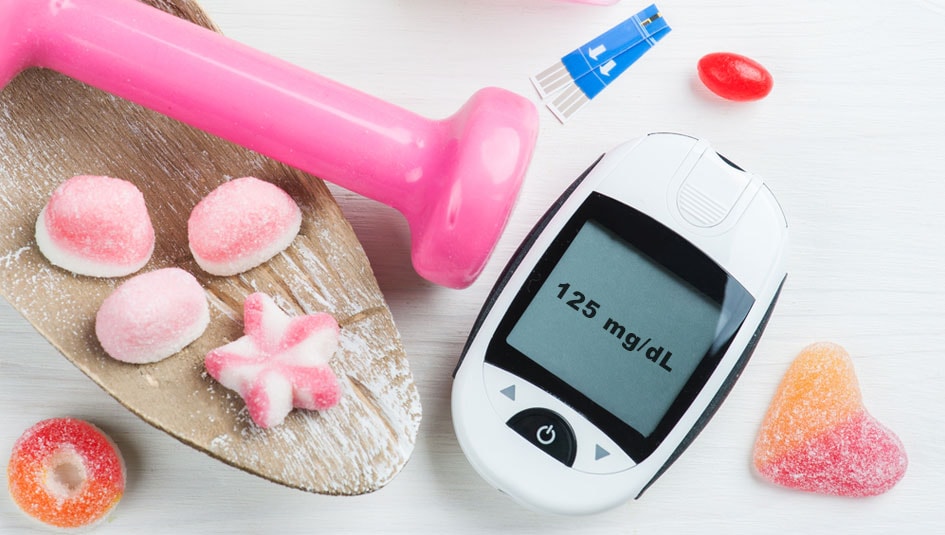How to Exercise on Insulin Therapy: The Basics

Integrated Diabetes Services (IDS) provides detailed advice and coaching on diabetes management from certified diabetes educators and dietitians.
Regular exercise can help keep blood glucose levels more stable and help you stay healthier in the long run, but isn’t always an easy thing to do when you are on insulin therapy. It takes practice and constant tinkering to avoid blood glucose swings when you exercise, but I would argue that the benefits outweigh the risk.
It helps to start with a few basics about how exercise can affect glucose levels. The process can feel a bit complicated, especially if you’re just starting out, so feel free to refer back to these instructions and discuss your exercise plan with your medical provider and/or certified diabetes educator often.
Step 1: Make insulin adjustments BEFORE you work out
Exercise can lower your blood glucose levels while you’re doing it, so it’s important to plan ahead. Determine where your insulins level are by looking at your basal rate as well as your insulin on board (what’s in your system) from your last injected bolus of insulin. If you have insulin on board when you start to exercise, you’ll need to eat a certain amount of carbs to offset this and prevent a blood glucose drop during the activity.
The most optimal time to work out, especially for aerobic exercise, is about 60 to 90 minutes after a meal so that you can adjust the meal bolus down and avoid the need to eat more to avoid a blood glucose drop during activity. If you exercise after a meal, adjust the meal bolus down by 25 percent to 50 percent, depending on the duration and intensity of the cardio workout. If you’re doing a resistance training session, you may find you don’t need to adjust the insulin down at all, as this type of activity will not usually cause a drop in levels during or right after the activity; in fact they might go up during the workout.
Thanks for reading this Insulin Nation article. Want more Type 1 news? Subscribe here.
If you work out with just basal insulin in your system, you might want to consider eating a few carbs to keep things stable during the activity. Aim to test your levels about 20 minutes to 30 minutes before you work out, and eat about 10 grams to 15 grams of carbs for every 30 minutes to 45 minutes of exercise. If you’re going to work out for longer than an hour and you’re on a pump, you can also adjust your basal insulin rate to keep things more stable.
If you use a continuous glucose monitor (CGM), look at the trend line as well as the trend arrows. Consider if your glucose levels are rising, falling, or stable when you head into a workout to help you decide how much, if any extra carbs, are needed to keep your blood glucose levels from fluctuating.
Always carry a quick-acting source of glucose with you, such as glucose tablets, gel, or even a sweetened sports drink. Have your monitor with you as well as your CGM, if you use one. Make sure to stay hydrated before, during, and after, as dehydration can affect glucose levels, too. Wear a medical alert ID; that way if you need help, those around you will have some knowledge about your diabetes.
Step 2: Log what happens
Choose an activity (cardio, resistance, or a combination of the two) and then monitor your glucose levels before, during, and after exercise. It can also be helpful to log glucose levels about two to three hours afterwards so you can see if the exercise continues to affect glucose levels several hours after you finish the workout.
Step 3: Evaluate the log
Look where blood glucose levels were at each point and make note of what you adjusted and what might need to be adjusted when you exercise again.
Exercise of any kind is great for our health and can keep our glucose levels more stable. It does require a bit of prep work ahead of time, but with some simple steps to get started, you’ll feel more confident about exercising and learning how to make adjustments.
One of the services Integrated Diabetes Services provides is counseling on exercise. If you would like to learn more about their services, click here.
Do you have an idea you would like to write about for Insulin Nation? Send your pitch to submissions@insulinnation.com.
Have Type 2 diabetes or know someone who does? Try Type 2 Nation, our sister publication.